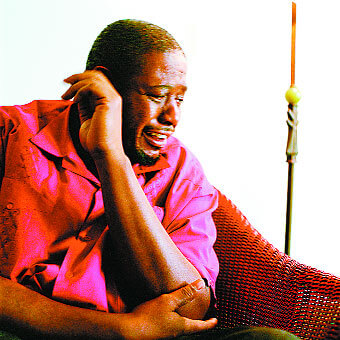A new acronym for a new crowd of artists with certain concerns
Discussing the work of Sam Taylor-Wood is problematic. So much of the hype surrounding her work––the “young British artist” (YBA) label that links her to others from the “Brit Pack, her marriage to Jay Jopling, the gallery dealer most responsible for bringing this group’s art to the fore, her survival from two cancer bouts and her constant use of celebrities as subjects––makes it inevitable that the discussion of art has more than a dose of fashion and autobiography mixed in as well.
In the current show at Matthew Marks Gallery, Taylor-Wood has again focused her camera on the famous. In the series “Crying Men,” from 2002 –2004, Taylor-Wood shows large C-prints of 28 A-list actors in various states of sorrow, with some shedding tears. The handsome photographs are in both black and white and color.
Are these photographs interesting because they are of men crying or simply because the men are famous actors? As I went through the exhibition putting names to famous faces––Paul Newman, Robert Downey, Jr., Willem Dafoe, Jude Law––my concerns were not about art and photography but rather the connection between the artist and the actor, and reality versus artifice.
The trophy face approach reached its apex for Taylor-Wood in her piece “David,” which hangs in England’s National Portrait Gallery. Here the beautiful sleeping face of David Beckham, the Brad Pitt of international sports, is recorded for an hour. The idea is Warholesque and once again the concern is as much Page Six as Jansen’s “History of Art.” The cult of celebrity seems integral to Taylor-Wood’s mix of sociology and conceptual art.
Her second series of photographs is entitled “Self Portrait Suspended I –VIII,” from 2003. The artist in bra and panties has been tied and bound in unusual positions several feet above the floor of her perfect loft space. The ropes used to bind her have been digitally removed leaving a contorted, floating partial nude. Issues of sex and fashion are put on par with those of art. The size of the works, the loft setting and the gallery context all say art while the style, youth, beauty and titillation all remind me of fashion editorial and advertising.
Finally, the third piece, “Ascension,” (2003) is a 35 mm film of a man with a dove on his head tap-dancing on the chest of a prone, still man. The dramatic tension centers on whether or not the dove will take flight. Any Dada ascension metaphor makes for a rather thin plot line.
The Taylor-Wood show was somewhat less than satisfying, not unlike the feeling of peering into a perfectly dressed fashion window in the Meat Packing district, or on Madison Avenue. Art? Yes. Important art? That remains to be seen.



































